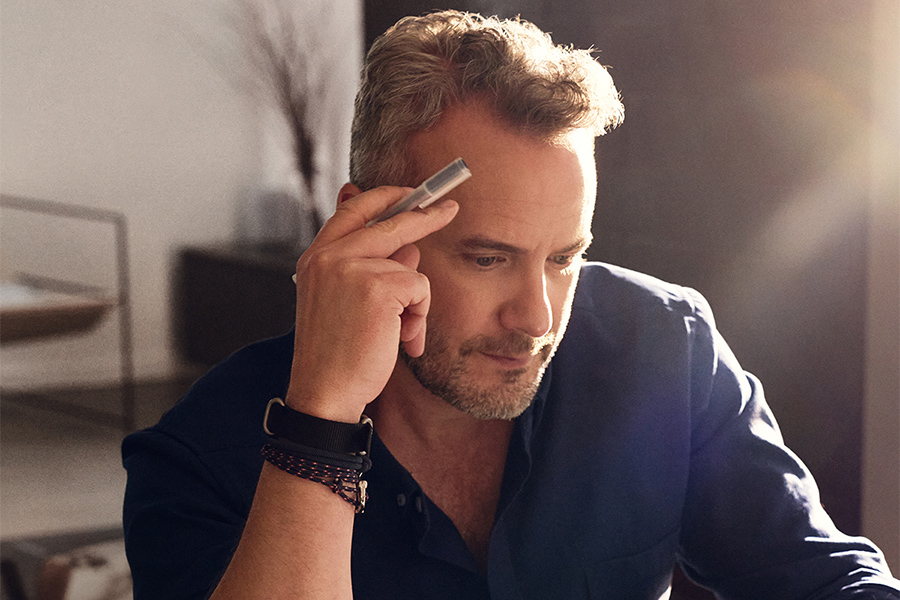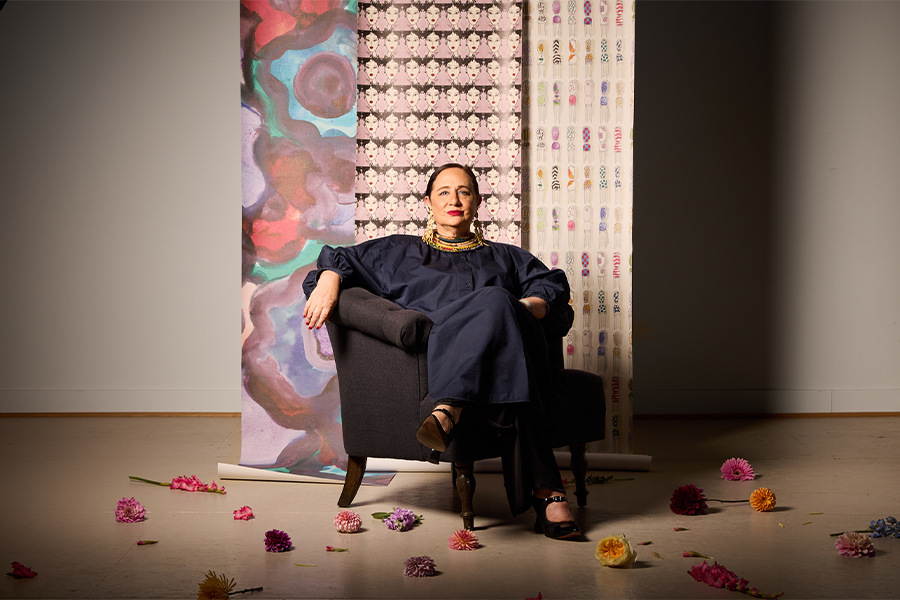San Francisco-based Lundberg Design, led by design principal Olle Lundberg, is responsible for a host of destinations in the Bay Area and beyond, including some of chef Charles Phan’s restaurants, the recently opened Moroccan eatery Mourad, and several wineries and distilleries. Here, Lundberg talks about his industrial inspirations, his relationship with Phan, and doing modern architecture in a city with a penchant for the old.
Did you always know you wanted to be a designer?
No, first I wanted to be a writer. Then a sculptor (if you think it’s hard to make a living as an architect, try being an artist!). Architecture for me was a great combination of artistic creativity combined with complex problem solving.
What are some of your first memories of design?
My first memory of recognizing design as something special was a house I lived in in Cheboygan, Michigan. It was a recreation of a Georgia Governor’s Mansion built by a lumber baron in the early 1900s. It was an amazing building, just a perfect playground for an 11-year-old boy. My first memory of modern design was when I was 18 when I saw Frank Lloyd Wright’s Fallingwater for the first time. I was dating a girl who was a tour guide there, which was total serendipity. I was stunned; I’d never seen anything like it (to this day I can’t believe Edgar Kaufmann Sr.’s son gave it away, although what a gift to the world).
Did where you grew up influence your career path?
My father managed paper mills for Procter & Gamble, so we lived in all sorts of Midwestern mill towns. I loved the factories, which were these huge brick and steel structures always built on the bank of a river. And the machinery was so heroic, so beyond the scale of anything human. My penchant for industrial imagery and elements certainly comes from those mills.
Give us a bit of your background: college, first jobs, early lessons learned?
I got my undergrad degree in English literature and sculpture from Washington and Lee University [in Lexington, Virginia], which was a great liberal arts education. I bought a church with a friend after my freshman year, and we fixed it up and rented it out to three other friends. It was a great experience, and certainly why University of Virginia [UVA] accepted me into its architecture program. The UVA program is where I learned to be a designer, and during that time I kept building things myself.
Bob Vickery of the Vickery Partnership (now VMDO Architects), who was a professor of mine, gave me my first job. He threw me into architectural practice when I had very little previous experience and let me learn on the run, which was an amazing act of trust, faith, and kindness.
My first job in San Francisco was with Bob Marquis and Marquis Associates. I ended up working there four years where I got to work next to someone who just absolutely loved what he did and who defined himself through his work. It was a great lesson, and we remained close until his death [in 1995].
Why and how did you start your own firm?
I left Marquis to go back East and build a house I’d designed for my sister. Like all first projects it came in double the budget, so I had a choice to redesign it or build it myself. I was cocky enough to think I could build it on budget, so I did. That took two years and after working on my own I was pretty much unemployable. Also, I figured if I owned my firm I could bring my dogs to work.
Can you discuss some of your recent projects?
We just finished Mourad, a Moroccan restaurant for Mourad Lahlou in San Francisco’s iconic Art Deco skyscraper 140 New Montgomery. It’s a project that I am very proud of. The space is designed to evoke a memory of Morocco (Marrakesh in particular) without being overly literal, and in much the way that Mourad cooks modern food with a Moroccan sensibility, we do the same with the architecture.
We are doing a private museum project for an Asian art collection that is very exciting, and we are collaborating with [artist and sculptor] Andy Goldsworthy to incorporate a work of his into the architecture, which I believe is the first time he’s done something like this.
We also have a house project in Sonoma that has been a very interesting collaboration with the client, full of unique details and sculptural gestures. It has been a great opportunity to utilize the skills of our in-house fabrication shop.
Is there a challenging project that you are especially proud of?
When Charles Phan came to me to design Slanted Door, I had never designed a restaurant before, so it was always going to be challenge for us. Then add to it that it was in the iconic Ferry Building and Charles was this beloved figure on the San Francisco culinary scene. But Charles and I hit it off from day one, and we actually sketched up the plan that we ended up building in our very first meeting. My idea of taking honest natural materials and using them in a simple, elegant, and modern restaurant really resonated with his idea of what he was striving for with his food, and as a result it was a very easy project for us because we understood each other. From the day I met Charles to the day we opened his doors was exactly 10 months—almost unheard of in San Francisco—and for the last four years Slanted Door has been the highest grossing restaurant in California. I am very proud of Charles and his team, and I’m very proud of the work we did there. It is a beautiful restaurant, and the design has held up really well—I don’t feel that it is dated at all. We are about to give it a remodel, its first in 10 years. Hopefully it will be just as successful for the next 10!
What are you looking forward to at your office?
We are designing a winery for David Ramey [of Ramey Wine Cellars] in Healdsburg, California, in part the reuse of an old hop kiln. It is a combination of new and old structures for a great client who also happens to make really delicious wine (always a plus in a client!).
What do you find are the most challenging and exciting aspects of your job?
The most exciting part is to do work that is very personal—both to us and to the client—and to see them fall in love with what we give them. To see the project get built is the biggest joy.
The most challenging part is navigating historic planners and neighborhood groups. San Francisco has a preference for anything old over anything new, and that makes doing modern architecture a challenge. Under the guise of making the process democratic they make it possible for almost anyone to object to a project and significantly delay it. Yet in reality the result ends up being that only the very rich can afford the team necessary to succeed under those rules. It is a process built to extract compromise, which in the end encourages mediocre solutions. Nothing really bad usually gets built, but it is very hard to do anything really great either.
What is the most important thing to remember when designing a restaurant—both in terms of branding and interiors?
How people flow and circulate through the space is the most important part; you have to get the plan right. Customers and staff have to be able to coexist organically. We tend to avoid overtly thematic interiors and instead look for a resonance between the food and the architecture. And remember that acoustics are the ambiance! The crowd you are catering to differs if you are offering a loud environment versus a quiet one and that is a conscious decision the chef and designer have to make.
Is there an architect or designer you most admire? Why?
Peter Zumthor and Tom Kundig—their work is unique to them, and there is an overriding sense of craft in what they do.
What would be your dream project and why?
I’d like to do a space of contemplation—a chapel, a spa, or a retreat space. I have an image of it in my head (which for me is unusual as I normally start with no preconceptions). But for this it would be a little different. Also I have a 6-by-16-foot foot slab of redwood that I’ve been saving for over a decade to use in that project.
I would also love the opportunity to apply what I’ve been doing in both restaurant and residential design to a forward-thinking hotel project.
If you could have dinner with anyone, living or dead, who would it be?
My father, who died years ago, but who taught me about the love of food. I’d love to have one more meal with him.
Where would you eat and what would you be having?
Grand Central Oyster Bar and Restaurant in Manhattan, which was the first restaurant in New York my father ever took me to. We’d always have the combination pan-roast, which is a seafood chowder with paprika made right in front of you. I go have it every time I’m in New York. If they have the whole sea urchin, we’d have that too.
If you weren’t a designer, what would you be?
A master distiller at a bourbon distillery. Charles Phan and I are partners in Hard Water, which is an American whiskey bar on Pier 3 on San Francisco’s waterfront, and I am in charge of the vintage whiskey collection. I love the craft of making whiskey—the combination of science and art that it entails. I think I’d be quite good at it.


